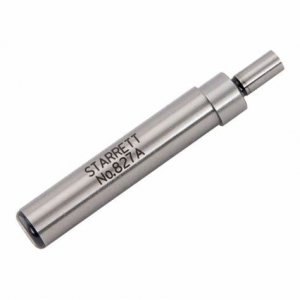Are those thousandths?
So it's running out about 8 thousandths, which would be 0.004 each side of the axis.
These are my (speculative) first thoughts. I have never done this, but one day, I might have to. I do own one just like it that is still in it's box.
If it got bent by too hard a sideways shove, it maybe can be shoved back by setting against the same surface that bent it, and shoving back, but in a very controlled way. There has to be some plastic resilience somewhere, and also, you might first get curious about in which part the bend really is. Might it be somewhere within that nylon looking bit?
Anyway - with not much more to lose, leave the indicator on it, and shove with the vise from it's "bent" maximum back by 0.004" and then un-shove it, and see if it returns back to maximum bend. Then shove again, maybe 0.006, exploring just how far you need to go to start affecting it. You might have to shove a whole lot, but once you know where it's yield point is, go careful, checking where it returns to.
There is much to go wrong here, and other stuff can happen on the way. If you get lucky, you might return it to within a few microns concentric

